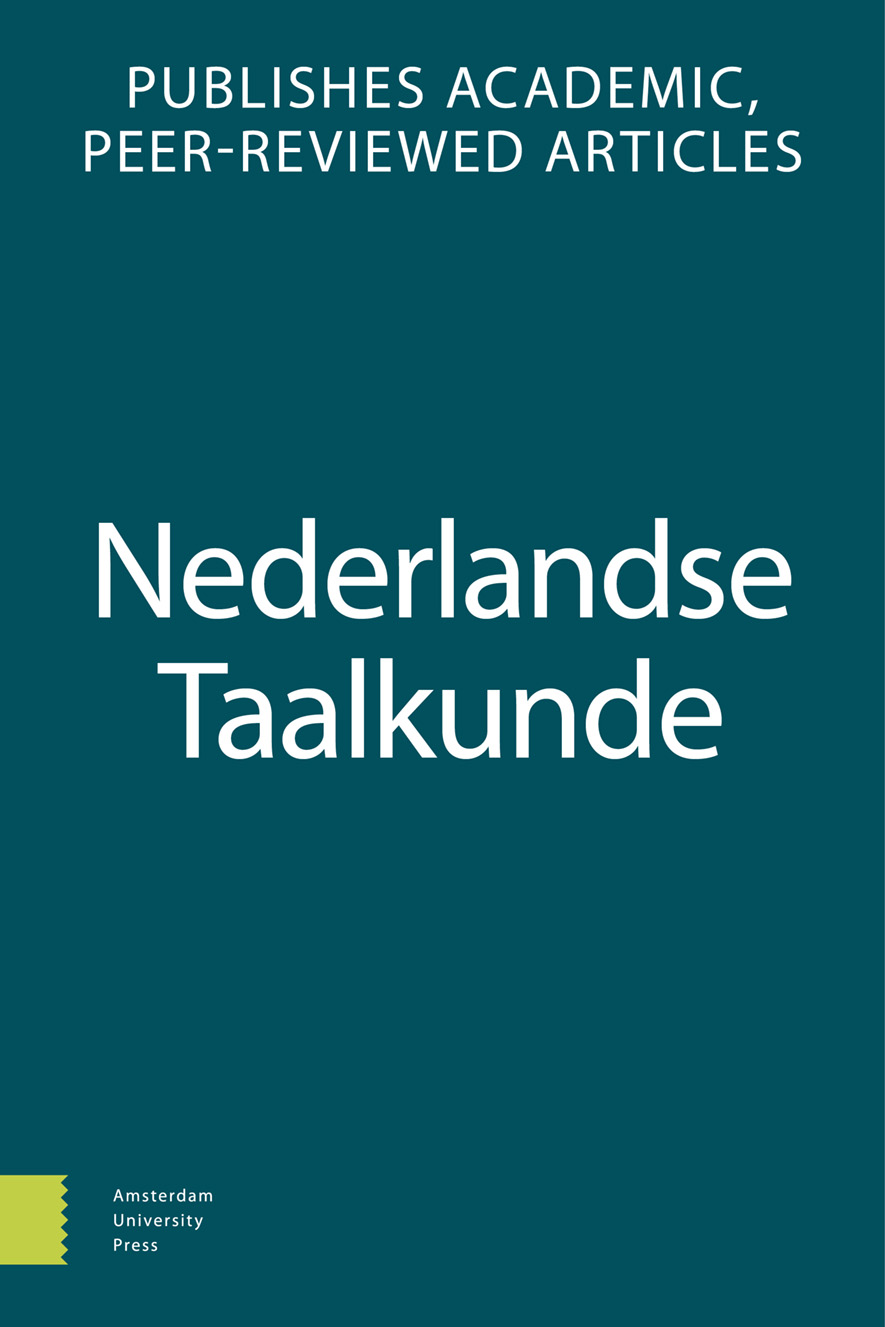-
oa Merk toch hoe sterk - Sjwa-insertie in spontaan gesproken Standaardnederlands
- Amsterdam University Press
- Source: Nederlandse Taalkunde, Volume 14, Issue 1, apr. 2009, p. 45 - 65
Samenvatting
This paper focuses on schwa epenthesis in present-day spontaneously spoken Standard Dutch. Schwa epenthesis is studied in consonant clusters consisting of /r/ followed by a non-dental consonant. We compare the pronunciation of men and women, older and younger speakers, Flemings and Dutchmen originating from several regions in the Dutch language area. Since words with tautosyllabic consonant clusters (e.g. werk ‘work’) showed somewhat more schwa epenthesis than words with heterosyllabic consonant clusters (e.g. werken ‘to work’), both word types were analyzed separately. In contrast to the results of Kloots et al. (2002/2004) the Flemish speakers produced more schwas than the Dutch ones. The older generation used more schwas than the younger generation. This tendency was particularly strong within the group of female speakers. Moreover, our study revealed that schwa epenthesis is much more likely when /r/ is pronounced as a trill or fricative, although a non-vocalic pronunciation of /r/ does not lead to schwa insertion automatically.


